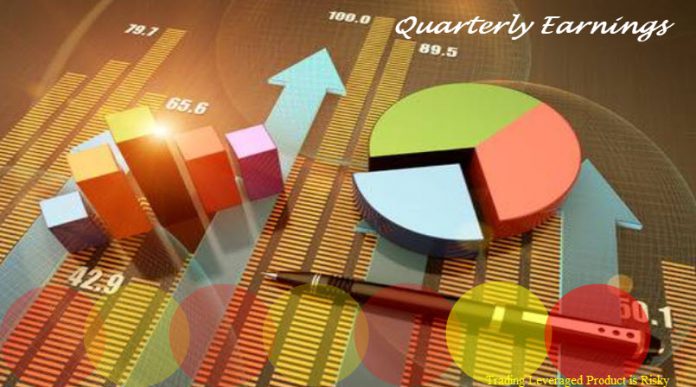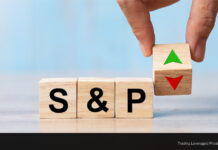Mastercard, Daily & Weekly
The payment processing space is a segment that benefits from strong consumer spending. At the moment, there has been a decline in spending because consumers are mostly staying at home and many entertainment facilities such as restaurants, cafes, pubs, city parks, tourist areas are closed. This closure has had a negative impact on credit card service provider companies. It is not certain how long this will last, but in the long run, the adoption of credit cards for cash will continue and will certainly provide benefits and efficiency for customers and value for providers.
First quarter earnings results from Mastercard Inc. are scheduled to be announced on April 29, 2020. In this announcement we will see the magnitude of the impact of a pandemic that has caused many business losses in the economic slowdown: Cross-border businesses, both companies and individuals, will be hit because of the closure. There is reduced cross-border travel because most government agencies, private agencies, staff and employees around the world are socially isolating as a form of coronavirus prevention. Air, water and land traffic schedules are restricted, postponed or even canceled. Because of this, the company will witness a setback as the dramatic drop in transaction volume, will have a serious and significant impact on transactions using cards.
Transactions using credit cards, let’s say hotels, travel agencies, rentals, restaurants, arts, and various individual services, have also decreased. Some of these things account for the largest number of transactions using cards. Whereas streaming service provider companies that use card payments may experience an increase, it is not the biggest contributor to their main income. However, the overall decline in sales might have weakened the number of transactions processed by the company. Mastercard cannot avoid this decline, as domestic consumer spending across the country has been seriously impacted by the coronavirus.
Mastercard announced earnings per share of $1.96 from revenues of $4.41 billion in Q4 2019, up 15.94% year on year. Total Mastercard assets for the last quarter was $29.236 billion, an increase of 17.6% year on year. Profit margins can be defined as the percentage of revenue saved by the company as income after deducting expenses. The Mastercard net profit margin as at 31 December 2019 was 48.08%. The PE Mastercard ratio on April 24, 2020 was 33.26. The current TTM dividend payment for Mastercard (MA) as of April 24, 2020 is $1.60. The current dividend yield for Mastercard on April 24, 2020 was 0.62%. The total number of Mastercard employees in 2019 was 11,400, down 22.97% from 2018, but the exact figure for 2020 is unknown at the moment due to the pandemic.
Source: https://www.macrotrends.net/stocks/charts/MA/mastercard/stock-price-history
Most analysts expect EPS of $2.03 and revenue of $4.39 billion in Q120. But will the pandemic shatter these expectations? It should be noted that Mastercard recently warned investors that economic turmoil will have an impact on full-year results.
 Almost all stock indices experienced a sharp decline at the end of February through the third week of March. Mastercard was no exception, as shares fell from the peak price of 347.21 to the lowest price of 199.98. Only in the last week of March until the second week of April did the retracement reach 50.0% FR, at 282.69. The big trend seen in the weekly period still hints at its upward major trend. But the pandemic shock effect has dashed hopes of the company to record profit targets in Q120 and beyond. In the temporary daily period leading up to the Q1 profit report, prices look pretty tough with a thin transaction range below the 200-day moving average. The RSI is spread flat in the middle area. MACD is still in the sell zone which gives hope, along with a thin histogram below the neutral level.
Almost all stock indices experienced a sharp decline at the end of February through the third week of March. Mastercard was no exception, as shares fell from the peak price of 347.21 to the lowest price of 199.98. Only in the last week of March until the second week of April did the retracement reach 50.0% FR, at 282.69. The big trend seen in the weekly period still hints at its upward major trend. But the pandemic shock effect has dashed hopes of the company to record profit targets in Q120 and beyond. In the temporary daily period leading up to the Q1 profit report, prices look pretty tough with a thin transaction range below the 200-day moving average. The RSI is spread flat in the middle area. MACD is still in the sell zone which gives hope, along with a thin histogram below the neutral level.
Ady Phangestu
Analyst – hfindonesia
Disclaimer: This material is provided as a general marketing communication for information purposes only and does not constitute an independent investment research. Nothing in this communication contains, or should be considered as containing, an investment advice or an investment recommendation or a solicitation for the purpose of buying or selling of any financial instrument. All information provided is gathered from reputable sources and any information containing an indication of past performance is not a guarantee or reliable indicator of future performance. Users acknowledge that any investment in Leveraged Products is characterized by a certain degree of uncertainty and that any investment of this nature involves a high level of risk for which the users are solely responsible and liable. We assume no liability for any loss arising from any investment made based on the information provided in this communication. This communication must not be reproduced or further distributed without our prior written permission.



















